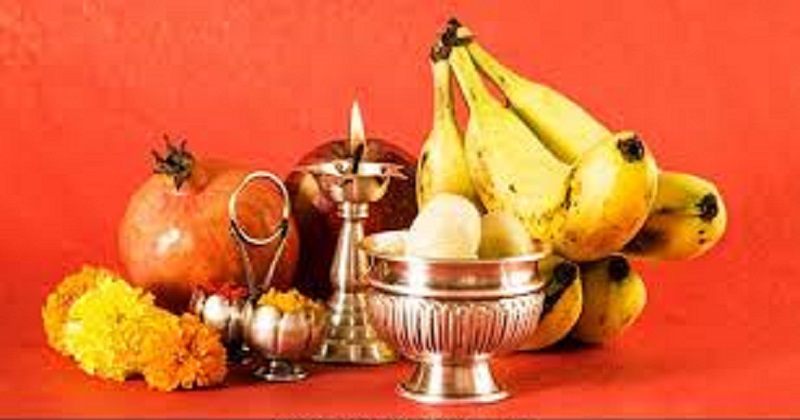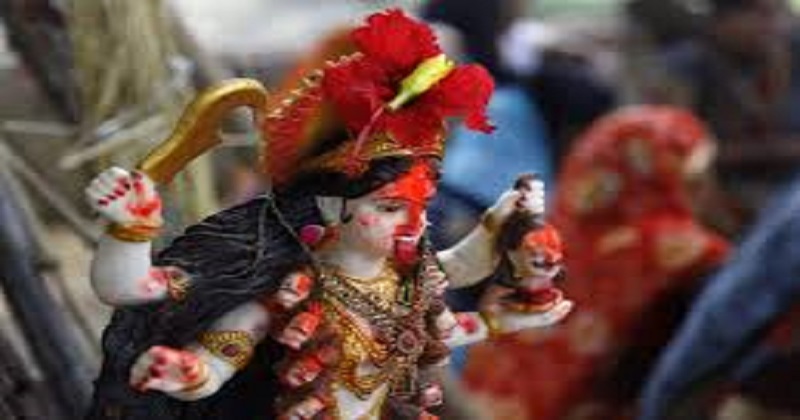
During the month of Ashwin (September/October according to the Gregorian calendar), Hindus celebrate Navratri, a nine-day festival dedicated to Goddess Durga. This is a festival that is celebrated across the country from North to South and East to West. Navarathri denotes the beginning of all auspicious events in the life of a devout. And this day is considered as to bestow all positive results to any commencement of an event in our day to day life
Despite the variations in style, the essence remains the same no matter where the celebration occurs. Navratri’s date vary every year based on the English calendar, since most Hindu festivals are determined by the lunar cycle. Discover the ‘Navratri 2021’ start and end dates, the vrat rules and other FAQs here.

When is Navratri 2021?
Navratri begins on October 7 (Pratipada, Ashwin, Shukla Paksha – waxing phase of the moon) and ends on October 14 (Navami, Ashwin, Shukla Paksha). The festival of Navratri honors Goddess Durga. In these nine days, devotees worship Mother Goddess to celebrate feminine power
How often does Navratri occur in a year?
As a devotion to the Devi, devotees observe fast four times per year. Of the four Navratris – Magha (winter), Chaitra (spring), Ashadha (monsoon) and Sharad (autumn) – the latter is the most important. In the Gregorian calendar, Sharad or Shardiya Navratri falls between September and October (Ashwin Month).
Navratri’s significance
Navratri celebrates the Victory of Devi over Mahishasur, a buffalo demon. Because of this, she is known as Mahishasuramardini, or the one who eliminated Mahishasur. The victory of good over evil is celebrated by devotees.

What is the purpose of observing a vrat during Navratri?
Navaratri marks the transition from winter to spring. The most popular Navratri festival is Chaitra (Spring), followed by Sharad (Autumn), while Magha (Winters) and Ashadha (Monsoons) are less well known and are often referred to as Gupt (secret). Since Navratri marks the beginning of a new season, a vrat is observed to help the body prepare for the change of seasons.
Rules for the Navratri Vrat
- People who observe the Navratri vrat follow certain rules. It is important to follow these to ensure a person benefits both mentally and physically. People who wish to keep the vrat must maintain celibacy.
- Keep a celibate lifestyle. During Navratri (nine nights), you can introspectively discover your own self-awareness, cultivate self-discipline, enhance self-control and be spiritually awakened.

Benefits of observing the Navratri Vrat
- In addition to the change of season, Navratri is also celebrated which takes place during the spring. In order to help the body prepare for the change in weather, a vrat is observed. There has been a tradition of fasting followed by people of various ages and genders for centuries. In addition, it has numerous health benefits when practiced judiciously.
- Navratri is also the perfect time to detoxify and strengthen the body from within. When fresh foods are included in the diet, nutrient-rich foods are consumed. Furthermore, the fruits contain antioxidants which further reduce free radicals in the body.
As per Ayurveda, fasting rekindles your digestive fire. An increase in digestion burns away toxins. A body that is emptied of toxins loses dullness and lethargy. This results in all the cells in the body being rejuvenated. So, fasting serves as a helpful detoxifying therapy. In a state of balance and calm, the body brings peace to the mind and the mind brings peace to the body.

Post Your Comments